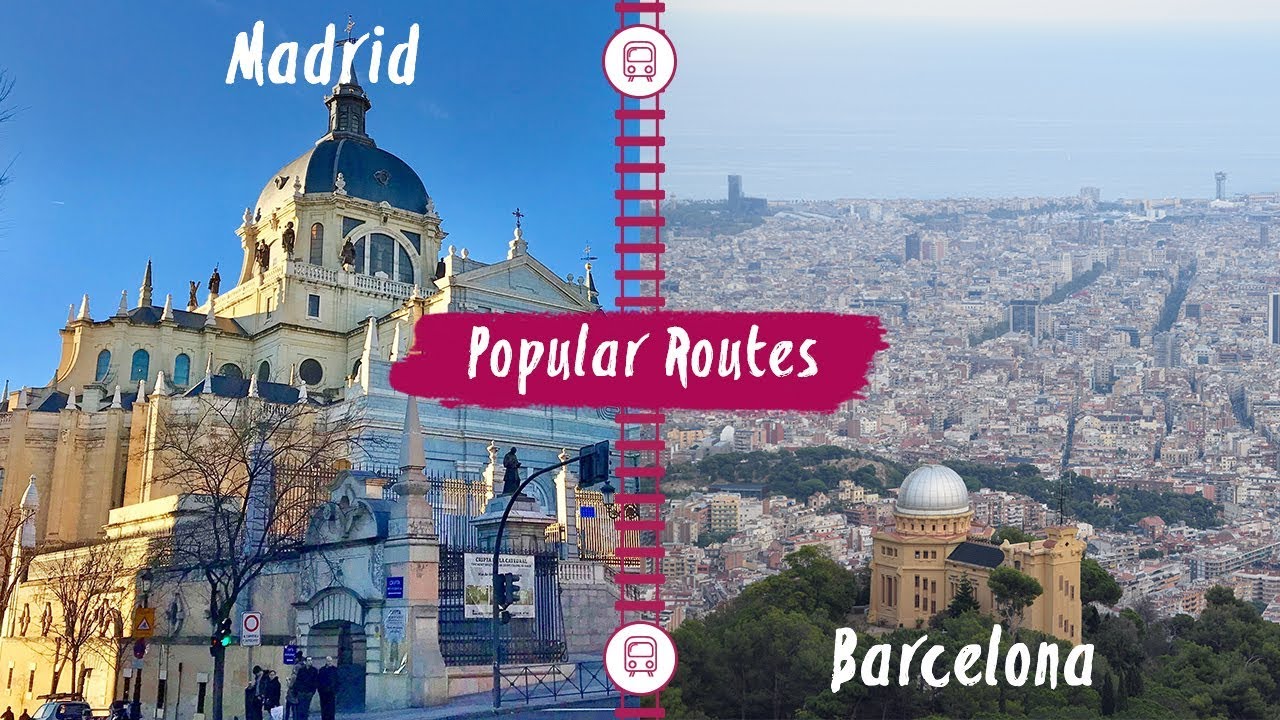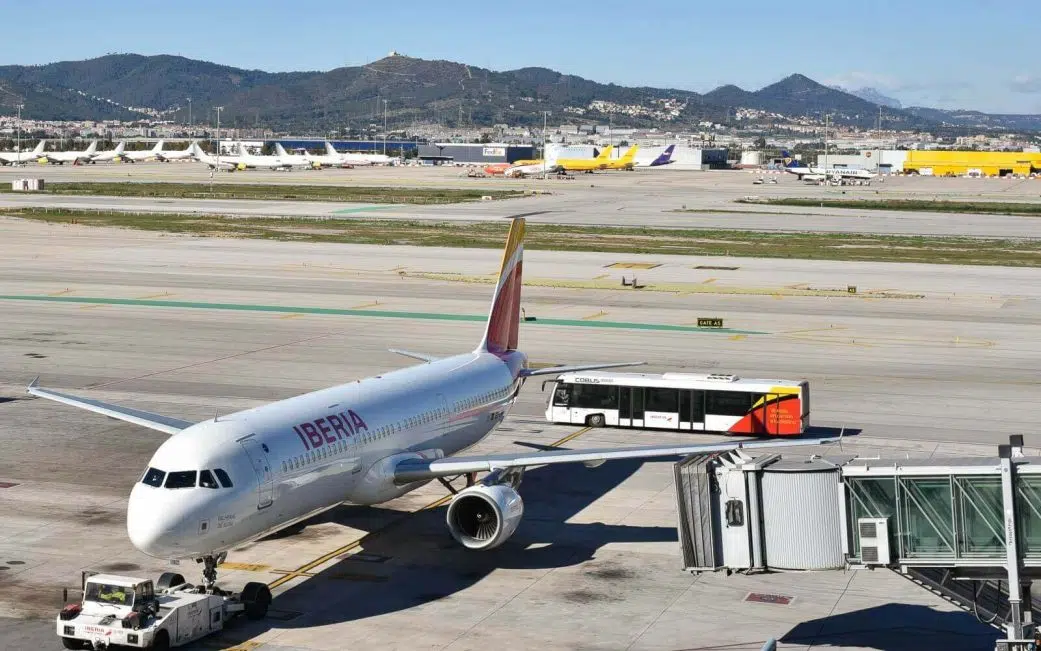How to Travel from Madrid to Barcelona: Best Trains, Flights, Buses, and Driving Options Explained
Traveling from Madrid to Barcelona always excites me. These two vibrant cities offer their own unique energy and sights so making the journey between them feels like an adventure in itself. Whether I’m planning a quick getaway or a longer trip I want the smoothest and most enjoyable route.
With plenty of options available it’s easy to get overwhelmed by the choices. I love finding the balance between speed comfort and cost so I’m here to break down the best ways to travel from Madrid to Barcelona. Let’s make your trip just as memorable as the destinations themselves.
Overview of Travel Options from Madrid to Barcelona

Overview-of-Travel-Options-from-Madrid-to-Barcelona
Direct trains, flights, buses, and car rentals connect Madrid to Barcelona, linking both cities with efficient transport. High-speed trains like AVE depart from Madrid Atocha and reach Barcelona Sants in about 2.5 to 3 hours, offering frequent daily departures and comfort for business or leisure. Flights take around 1 hour and operate from Madrid-Barajas to Barcelona-El Prat, ideal for tight schedules or international connections. Bus companies including ALSA serve travelers seeking budget-friendly options, with journey times from 7 to 8 hours and varying classes of service. Driving the 620-kilometer route via the A-2 or AP-2 highways gives flexibility for day trips or exploring small towns along the way. This range of ground and air transport shapes a seamless trip, matching diverse budgets, itineraries, and personal preferences.
Traveling by High-Speed Train
Traveling from Madrid to Barcelona by high-speed train gives me a direct, comfortable, and efficient city-to-city experience. Frequent daily departures and short travel time set the AVE service apart from other options.
AVE Train Features and Schedule
The AVE (Alta Velocidad Española) trains reach speeds of up to 300 km/h, making the 620 km journey in about 2 hours and 30-40 minutes. Trains depart from Madrid Puerta de Atocha and arrive at Barcelona Sants, both centrally located stations with easy access to local transport. Multiple service classes—Turista (Standard), Preferente (First Class), and Avlo (low-cost)—let me select the right balance between price and comfort. Service on this route starts early and ends late, with Barcelona Sants station open daily from 4:30 a.m. to 12:15 a.m.
Booking Tickets and Tips
I book tickets on the official Renfe website or trusted digital platforms. Advance booking secures the best fares, with prices ranging from about $29 up to $200, based on timing and class. Each ticket includes a free Cercanías (local train) transfer in Madrid and Barcelona. I compare new operators like Iryo and Ouigo for lower prices and additional schedule options. Adding flexibility for changes or cancellations sometimes justifies a slightly higher fare, especially if my plans could shift. Choosing the AVE means I travel quickly, comfortably, and directly between Spain’s two largest cities, often at a competitive price.
Flying from Madrid to Barcelona

Airport-Transfers-and-Logistics
Flying from Madrid to Barcelona offers the quickest airborne journey between the two cities. I find this option efficient for tight schedules, especially when time savings outweigh city center-to-center convenience.
Airlines and Flight Duration
Major airlines like Iberia, Air Europa, and Vueling operate frequent daily flights from Adolfo Suárez Madrid–Barajas Airport (MAD) to Barcelona–El Prat Airport (BCN). Each direct flight takes about 1 hour and 15 minutes. Factoring in check-in, security, and boarding, my total airport-to-airport travel time reaches or exceeds 3 hours. Booking direct flights with the same airline or using through tickets improves connection security and reduces the risk of missing departures.
Airport Transfers and Logistics
Transferring at Madrid Airport often involves time-consuming steps. I usually exit the international terminal, pass through customs, complete a security screening, and sometimes switch terminals before boarding my domestic flight. I plan at least 2 hours between connections in Madrid to avoid rushing or delays. Once in Barcelona, efficient transport links like the train, metro, or Aerobus connect me directly to the city center within 30 minutes. For reliability, I always double-check transfer times and terminal arrangements, especially during peak hours or summer months.
Traveling by Bus
Traveling by bus from Madrid to Barcelona offers a practical and budget-friendly route. I get access to major routes and a reliable schedule, connecting the capital directly with Catalonia’s vibrant hub.
Bus Companies and Routes
ALSA runs the primary bus service between Madrid and Barcelona, operating the bulk of inter-city connections. Buses leave from Madrid Barajas Airport Terminal 4 or Madrid Chamartín, taking passengers to Barcelona Nord Bus Station or Estació d’Autobusos Nord. While other companies operate regionally, ALSA’s national coverage, especially on this route, stands out for punctuality and frequency.
Comfort and Travel Time
Bus journeys on this route usually last about 8 to 9 hours, which is longer than train or flight options. I find tickets generally cost $47 to $88, depending on service level and booking time. Onboard comfort is modest, with ample luggage allowance and amenities like Wi-Fi and toilets available on most buses. Discounts up to 50% apply for seniors, youth, and frequent travelers, making the bus a strong choice for budget trips. Booking in advance, especially on weekends or holidays, helps secure a seat on the preferred schedule.
Driving Between Madrid and Barcelona
Driving between Madrid and Barcelona covers about 616 km (383 miles) and usually takes 5 hours 43 minutes to 7 hours. I get full flexibility to set my pace, adjust my stops, and discover local highlights along the way.
Car Rental Tips
Renting a car for the drive between Madrid and Barcelona adds flexibility to my trip. Most travelers choose the AP-2 motorway via Zaragoza, a well-maintained, safe toll road. Tolls total around 35€, and petrol costs about 55-60€ for the one-way drive. Spain’s motorways are high quality, but I prepare for possible strong winds near Zaragoza. If I’m new to driving in Spain, video guides and PDFs make local rules easier to follow. I also factor in car rental costs, which vary depending on the provider and pickup location. Picking up the car in one city and dropping it off in another might result in extra fees.
Scenic Stops Along the Route
Choosing the AP-2 gives me an efficient, direct route, but detours transform the journey. Popular stops include Zaragoza, known for its Basilica del Pilar, and the Monasterio de Piedra, famous for gardens and waterfalls. I might visit historic towns such as Alcalá de Henares or Lleida, or stop at PortAventura World near Salou for theme park fun. For motorsport fans, MotorLand Aragón lies just off the main route. Natural parks and hidden gems near the highway offer opportunities to experience Spain’s regional culture and gastronomy. The direct motorway lacks scenery, so I plan extra stops if I want unique landscapes and local flavors.
Comparing Costs and Convenience

Comparing-Costs-and-Convenience
Traveling from Madrid to Barcelona gives me choices shaped by budget, speed, and comfort. High-speed trains like Renfe AVE offer the fastest and most convenient experience, taking just about 2 hours and 37 minutes city center to city center, with prices varying from $29 for basic fares to $200 for first-class and flexible tickets. I can catch these trains at Madrid-Puerta de Atocha and step off at Barcelona-Sants, both centrally located for easy access to public transport and hotels.
Flying between the two cities cuts the time in the air to about 1 hour, but total travel takes closer to 3 or 4 hours after adding security and airport transfer: Madrid-Barajas to El Prat involves transit on each end. Prices range from $40 for early bookings with airlines like Vueling, Iberia, and Air Europa, to over $200 during peak periods or last-minute. While flights sometimes appear faster, the airport process often extends the total journey time.
Bus travel is the lowest-cost option at around $20, with trips stretching 7 to 9 hours. Operators like ALSA and Avanza arrive at central bus stations, providing value for budget travelers. Buses feature basic amenities such as Wi-Fi and toilets, but longer hours on the road make this choice suitable for those wanting to save the most money.
Driving lets me tailor the journey, with direct routes from Madrid to Barcelona covering roughly 610 km in 6.5 to 7 hours via AP-2 motorway. Costs for car rental and fuel commonly fall between $112 and $162, with toll roads adding to the total expense. Ridesharing options, available from $35, match driving times but shift control over stops and route flexibility.
Public transport in each city extends the convenience factor. I use metros in Madrid and Barcelona to quickly connect from train stations or airports to local attractions, shopping zones, and hotels. If my priority is speed and simplicity, I pick high-speed trains. For lower fares, I opt for buses or occasional discounted flights. Flexibility drives me toward car rental or rideshare, especially for exploring midway towns or rural scenery.
Conclusion
No matter how you decide to travel between Madrid and Barcelona you’re in for an unforgettable experience. I always find that planning ahead and weighing what matters most—whether it’s speed budget or the freedom to explore—makes the journey even more rewarding.
Both cities have so much to offer and the right travel choice sets the tone for your adventure. Enjoy every moment on the road or rails and soak in the best of Spain along the way.
Frequently Asked Questions
What is the fastest way to travel from Madrid to Barcelona?
The fastest way to travel between Madrid and Barcelona is by high-speed train (AVE), which takes about 2.5 to 3 hours. Flights are quicker in the air but require extra time for airport procedures, making the overall journey about 3 to 4 hours.
How much does it cost to travel from Madrid to Barcelona by train?
Ticket prices for the high-speed AVE train range from $29 to $200, depending on the class and how far in advance you book. Booking early often secures the best fares.
How long does it take to fly from Madrid to Barcelona?
Direct flights take around 1 hour and 15 minutes, but including check-in, security, and transport to and from airports, the total travel time is usually 3 to 4 hours.
Are there budget travel options between Madrid and Barcelona?
Yes, buses, especially those operated by ALSA, are budget-friendly, with ticket prices starting around $20. These journeys take 7 to 9 hours, making them the most economical choice.
What are the advantages of driving from Madrid to Barcelona?
Driving offers flexibility, letting you explore small towns and scenic spots along the 616 km (383 miles) route. Travel time is approximately 5 hours and 43 minutes to 7 hours, depending on stops and traffic.
Is booking train or bus tickets in advance necessary?
Booking in advance is highly recommended for both trains and buses, especially during peak travel times. Early bookings often mean lower prices and better seat availability.
Which train lines operate between Madrid and Barcelona?
Renfe’s AVE high-speed trains are the primary service, offering multiple daily departures. New operators may also offer competitive prices, so comparing options can help save money.
What amenities are available on buses between Madrid and Barcelona?
ALSA buses feature amenities like Wi-Fi, toilets, and comfortable seats. Discounts are available for seniors, youth, and frequent travelers.
Are there tolls when driving between Madrid and Barcelona?
Yes, if you use the AP-2 motorway, tolls apply and should be factored into your travel budget along with fuel and car rental costs.
Can I get to the city center easily from the train station or airport in Barcelona?
Yes, both Barcelona Sants Station and Barcelona El Prat Airport have excellent public transport connections that will get you to the city center in around 30 minutes.
